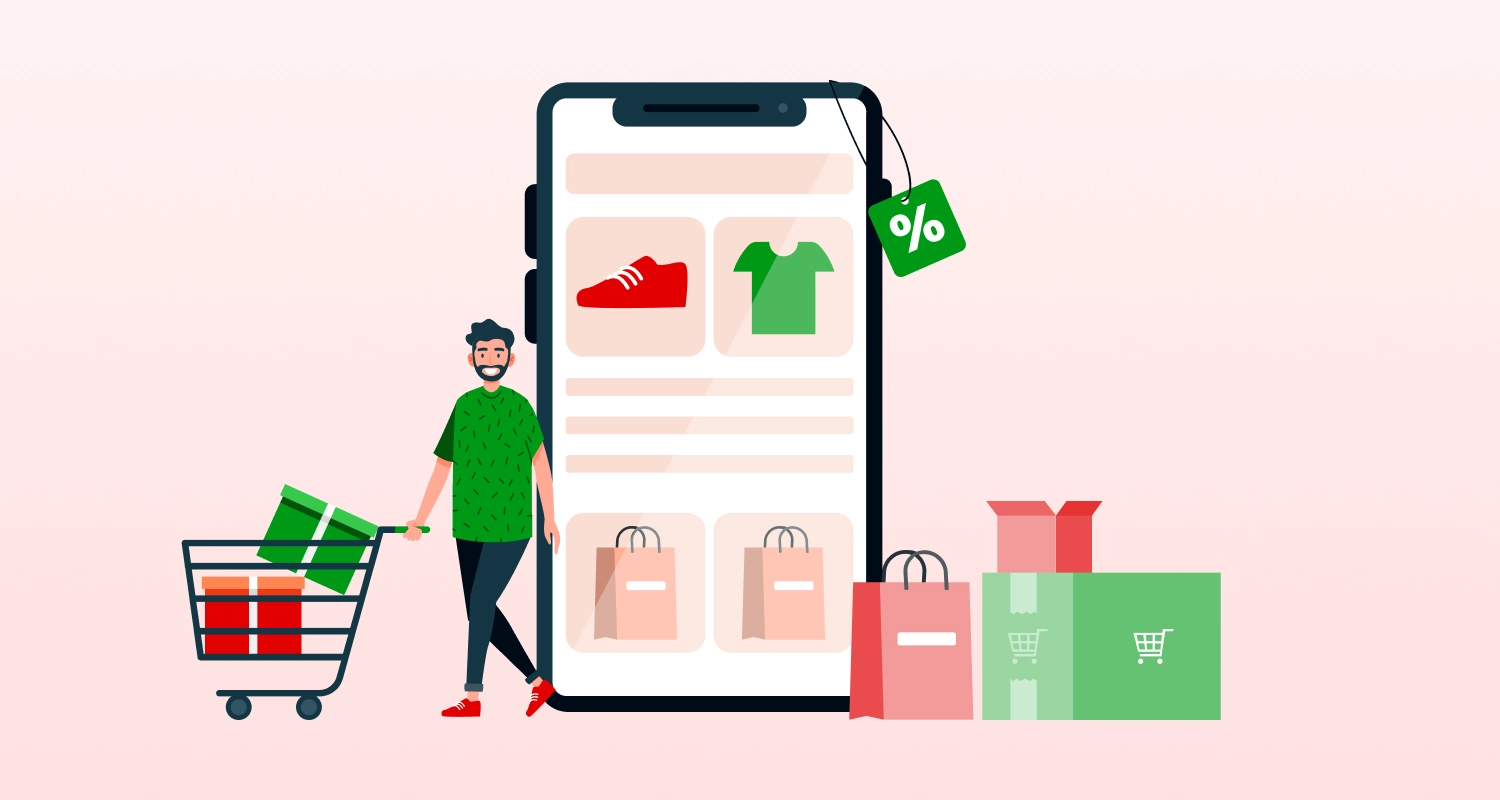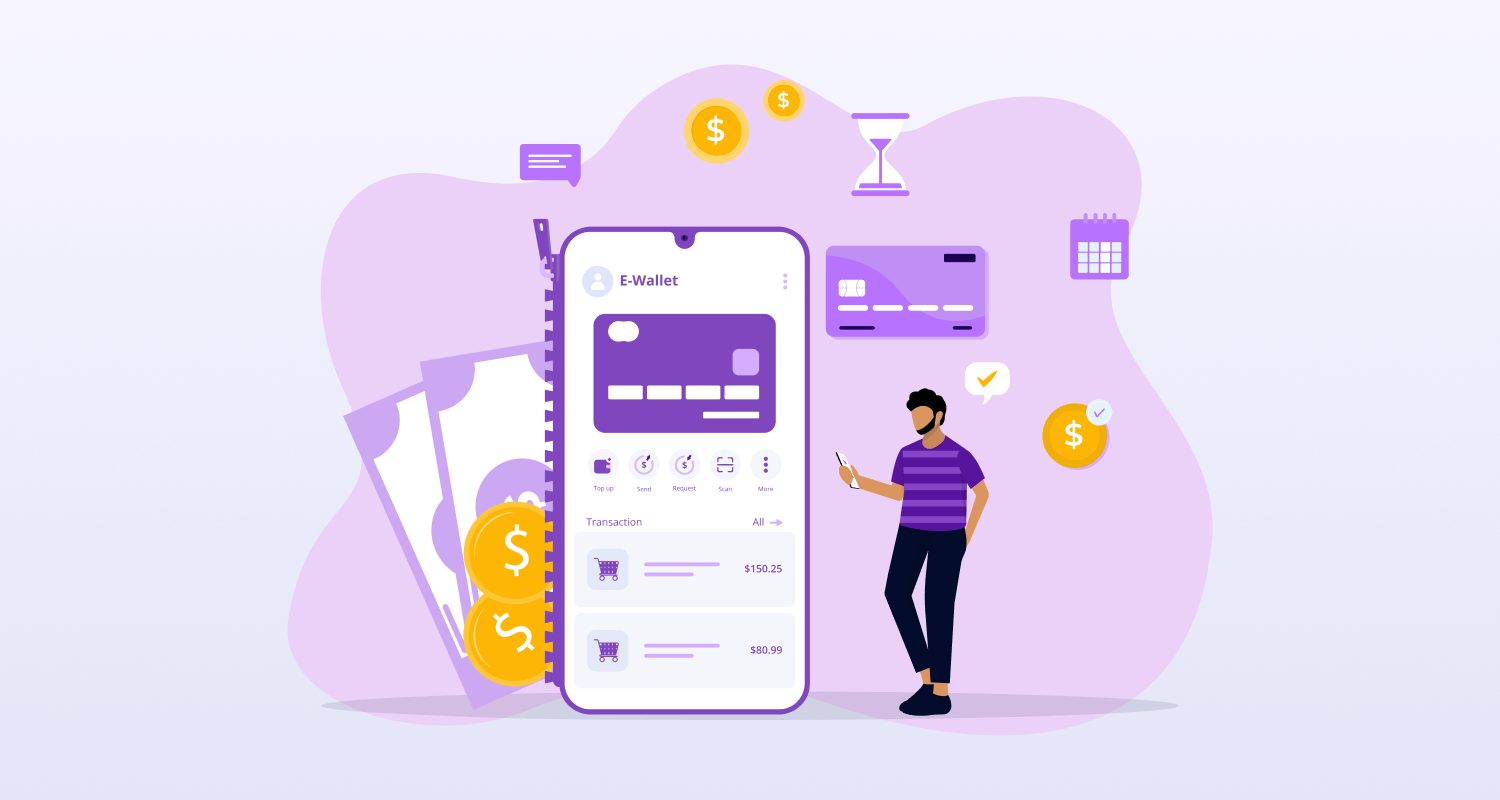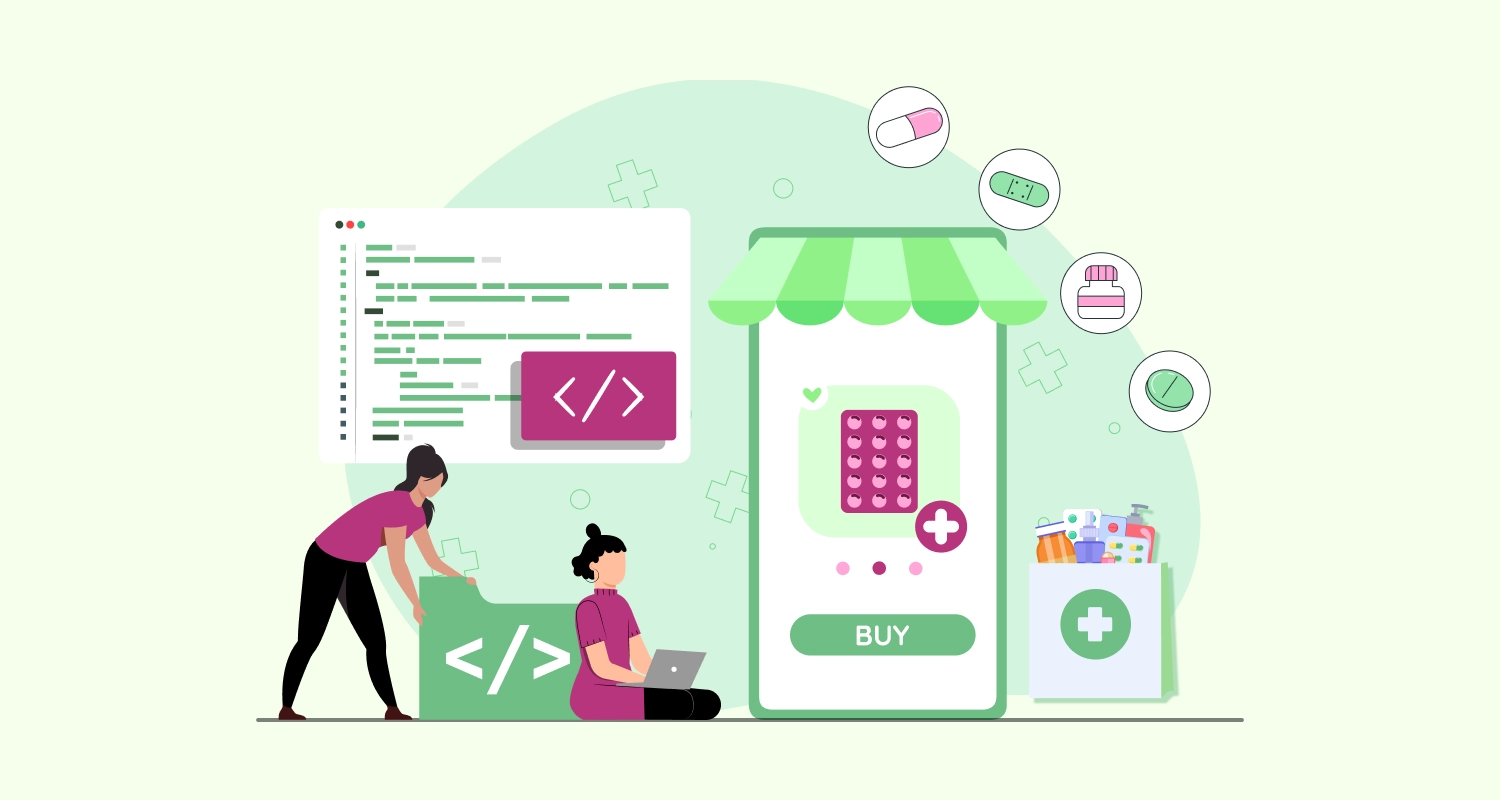When we hear the word “logistics,” the first images that come to mind are frantic procedures, protracted and disorganized paperwork, manual labor, and continual supervision. But the logistics sector has undergone a number of changes as a result of recent technological advancements. Simple chores that once required waiting in queue for hours to dispatch a courier can now be quickly completed with a simple tap on a mobile phone screen.
Proper communication between shippers and drivers is made simple with the help of a logistics software development company. According to ExpertMarket Research, the logistics market is further expected to grow at a CAGR of 6.3% between 2023 and 2028 to reach a value of almost USD 14.37 trillion by 2028. Additionally, these logistics applications contribute to route optimization, cost savings, convenience, corporate expansion, and individual efficiency enhancement.
Given its many advantages, today’s businesses are eager to use this technology in order to succeed in this sector of the economy. This blog has all the information needed to develop a logistics mobile app if you’re someone trying to establish a name for yourself in the logistics sector.
What is the Need to Create an App for Logistics?
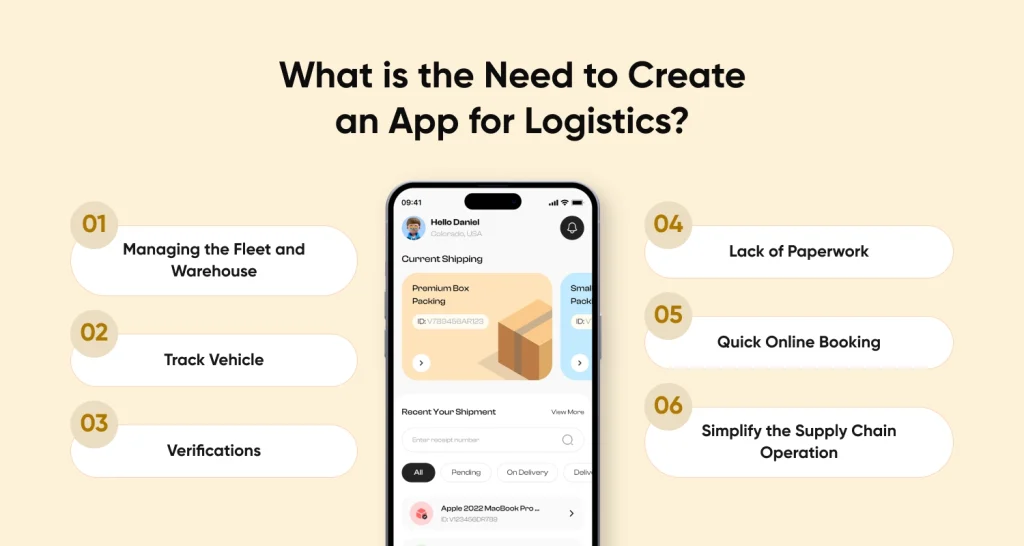
Here are some of the key reasons to develop a transport and logistics app for your business.
Managing the Fleet and Warehouse
Any logistics company’s ability to effectively manage its fleets and warehouses is crucial to its success because doing so leads to higher functioning and productivity. Because these apps make it possible to store data much more successfully than with a manual approach, there are essentially no chances of data loss or misplacing. In the end, these apps are very useful for avoiding mistakes and faults brought on by manual processes.
Track Vehicle
One of the key components of the Logistics app is Track Vehicle Accuracy, which deals with the timely and accurate delivery of goods. This is made possible by the Geolocation technology, which enables the admin and users to follow the location of the car in real-time and notify customers at the same time.
Verifications
The delivery process is confirmed in real time by the logistical apps. Customers and the logistics company can both validate the delivery of the product in real-time in this fashion.
Lack of Paperwork
Keeping up with a tonne of paperwork, especially the kind that comes with the logistics industry, is not at all simple. Thus, this problem can be simply resolved with everything being streamlined by having a logistics mobile app established.
Quick Online Booking
These apps can give consumers the convenience of doing much of their work on their phones, which is how most people manage their business these days. From their mobile app, they can easily book any shipment with an online booking feature.
Simplify the Supply Chain Operation
A logistics app facilitates and accelerates the supply chain process. It enables companies to efficiently track orders, control inventories, and deliver items. As a result, work gets completed more quickly, errors are less frequent, and everyone is aware of where everything is. Moving stuff around is like having a wonderful helper!
Businesses That Benefit With Logistics App Development
The following companies gain the most from creating logistics app development:
- Freight companies
- Retail and E-commerce businesses
- Distribution centers and warehouses
- Supply chain management
- Delivery services

What are the Basic Features of Logistics App Development?
Fleet Management
Managing a fleet of vehicles entails keeping an eye on and in charge of them. It entails activities including keeping track of a vehicle’s position, keeping an eye on its fuel supply, and planning repairs. Businesses that run a fleet of cars need to manage their fleet effectively in order to increase productivity, cut costs, and increase safety.
GPS and Navigation Systems
This is crucial for ensuring both the efficiency and safety of transportation. In order to plan their trips and prevent getting lost, drivers can use GPS to view their whereabouts on a map. Drivers can use real-time traffic information from navigation systems to avoid crowded regions and make it on time to their destination.
Effective Driver Management
You understand as the owner of a logistics firm how important your drivers are to the success of your enterprise. They are the ones who transport your goods, and they are crucial to ensuring client happiness. It is crucial to efficiently manage your drivers because of this.
Chat Function
The ability to chat is a crucial component of any logistics app. It enables admins to maintain ongoing communication with their drivers and clients, which can speed up problem-solving and increase client happiness.
Push Notifications
A wonderful approach to staying in touch with your consumers and keeping them informed about their orders and deliveries is through push notifications. Additionally, they can be used to provide delivery updates, bills, and driver information.
Customer Panel Registration
Your app’s registration procedure should be quick, easy, and uncomplicated. Social media should be incorporated into it to make it simpler for users to sign up. By doing this, you’ll be able to draw in more clients and get their names, emails, and social media account information.
Use a single sign-on (SSO) provider, make the form short and straightforward, use clear and succinct wording, and provide a quick and easy sign-up process.
Notify Users
You can inform users of the status of their shipments using the notify users feature. When a shipment is going to be delivered, alerts can also be sent using this method.
Make sure the notifications are understandable, succinct, pertinent, and sent at the appropriate time to make the most of this feature. Prior to sending notifications to users, you should test them.
Payment Gateway
A payment gateway must be included when creating an on-demand logistics app so that users may pay for their shipments without carrying cash. The payment gateway should accept a range of payment options, including PayPal, mobile wallets, debit cards, and credit cards.
Monitoring/Tracking
Customers feel secure and safe using the tracking order tool. Additionally, it promotes the development of customer and business trust. Customers can view the anticipated delivery time and the driver’s location by monitoring their orders. Knowing that their order is being shipped and will be delivered on schedule can help them relax.
Comments & Suggestions
In order to succeed, the transport sector needs customer input. You can use it to find areas for development, raise client satisfaction levels, and boost revenue.
Driver Panel
For logistics companies, the driver registration feature is crucial since it lets them manage who has access to their platform. Logistics companies can confirm the identity of their drivers and make sure that only authorized users can access the platform by requiring drivers to sign up with an email address, phone number, or social media account. This aids in securing consumer information and preventing fraud.
Profile of Drivers
Both the admin and the driver can add or edit driver information using the driver profile function. While the driver can add or change their own information using the app, the admin can manually enter the driver’s information.
Electronic Proof of Delivery
Historically, any theft that took place while a delivery was being made was the responsibility of the delivery driver. Drivers had to make complaints, assist with investigations, and occasionally even pay for the stolen products out of their own pockets during this stressful and time-consuming procedure.
How to Make Logistics App Innovative?
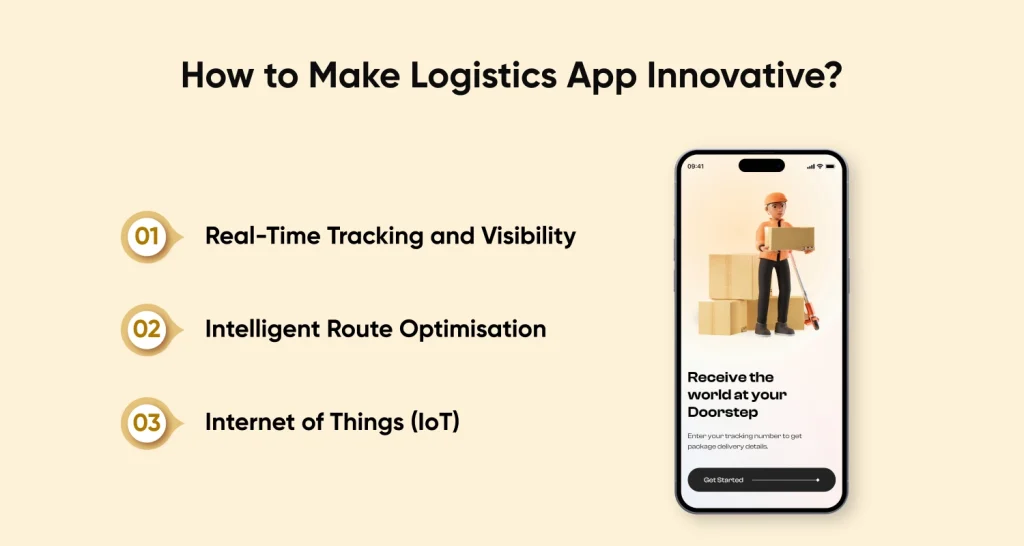
Focusing on integrating cutting-edge features, utilizing developing technologies, and offering distinctive value to users are the best ways to make a logistics app creative. The following tactics will help your logistics app stand out:
- Real-time tracking and visibility: These services should be made available so that users can keep track of shipments, locate cars, and receive information on the progress of deliveries. Use geolocation services and GPS integration to provide accurate and current information.
- Intelligent Route Optimisation: Use cutting-edge algorithms and machine learning strategies to enhance delivery timetables and route planning. To maximize effectiveness and cut down on delivery times, take into account variables including traffic patterns, the climate, and truck capacity.
- Internet of Things (IoT): Use devices and sensors to collect information on warehouse operations, cargo conditions (such as temperature and humidity), and vehicle performance. This information can be utilized to enhance overall logistics operations, ensure product quality, and facilitate better decision-making.
What are the Steps to Follow for Logistics App Development?
Determine the Kind of Logistics App You Wish to Create
The logistics app differs depending on the target users, goal, and feature set because logistics encompasses many different areas. Determine the type of app you need to create.
Collect the Top Mobile App Developers on Your Staff
The next step is to employ a seasoned app development business with a group of talented developers. You can read technical blogs, social media sites, and client review platforms to get helpful advice on making the best decision to guage the mobile app development services for your app development project.
Discuss Your Company Idea and Sign an NDA
You can plan a call or meeting in advance with the business you choose for your project. You must first have the corporation sign a non-disclosure agreement (NDA) before presenting your business concept to it. Give specifics about the app you want to create, including its complexity, the features you want to include, the users’ demographics, and more. In addition, you should determine your needs in terms of the budget and time estimate.
Obtain a Project Blueprint
The app cost that the company will provide you obviously won’t be a fixed price because there will be a number of tech requirements and other specifics that must be clarified beforehand. Avoid engaging with companies who offer to finish your logistics app development project on a budget. Compare the plans you receive from various businesses and pick the one that best fits the needs, schedule, and budget of your project.
Launch the Exploration Phase
This phase typically lasts one to three months, and throughout that time your team of developers will ask questions regarding the app’s business logic, end users, features, and user interface.
Create the MVP of Your Logistics App
The developers will first establish an MVP (minimum viable product) before building a feature-rich app. It’s the app version with the key elements that will showcase your business concept. The final demo will then be run by the developers, after which the app will be made available to the public in app stores. You will have access to your logistics app’s database, code, and other project-related materials at this edge.
Give the App Advanced Features
You and your team can select what cutting-edge features you can add to your app in the following phase after receiving input from the app’s users.
What is the Cost to Develop Transport and Logistics App?
The costs to develop a logistics mobile app depend on the following factors:
Choice of Platform
It will be less expensive to develop the app for a single platform. In this case, it would be to design it for multiple platforms. If one app needs one team to with extensive mobile app design services one single platform, it would need two teams to develop apps on cross-platform which would increase the app cost.
Choose the Right Country for Outsourcing
Outsource app development from the country not only by seeing the lowest cost but considering various quality factors. In this regard, the cost of development will vary depending on the nation in which you decide to create the app. The hourly app development rate varies from country to country; for example, it is much greater in the USA and Europe than it is in Asian nations. You must thus choose where to invest in app development because the difference is typically very large.
UI/UX and Features
This is yet another essential element in determining price, as an app with minimal functions and straightforward design would cost less than one with extensive features and intricate design.
As a whole, if you choose the Asian region for development, an app with basic capabilities for a single platform should cost between $15000 – $30000, whereas an app with advanced features for both Android and iOS platforms will almost surely cost between $55000 -$ 110000.
How CMARIX Can Help You With Logistics App Development?
The development of various types of logistics applications will eventually result in the success of the logistics industry because of the many advantages that logistics apps offer. Partner with an on-demand application development company to create the greatest delivery logistics app that will help you excel in today’s competitive market.
One of the top companies for developing logistics apps is CMARIX. We have created some of the best logistics app solutions of today. Our team of on-demand logistics app developers excels in creating and integrating features that can elevate a common app to the top of the app store charts.
Conclusion
The rise of logistic mobile app development services has revolutionized the logistics sector by bringing about a number of advantages that improve operational effectiveness, streamline procedures, and improve client experiences. Through real-time tracking, seamless communication, and data-driven decision-making, these cutting-edge apps enable logistics organizations to boost customer happiness and operational efficiency.
Frequently Asked Questions
How to Start a Logistics Company?
To start a logistics company, you need to know your niche, get licenses and permits, establish relationships with suppliers, and set up operations and strong clientele.
How to Create a Logistics App?
To create a logistics application, outline the features and functions, design UI, hire a skilled developer, and follow the step-by-step process to ensure quality testing and optimization before launch.
How Much Does It Cost to Develop a Logistics and Transportation App?
The cost to develop an app for logistics can vary depending on various factors like features, complexity of the app, platforms, and development type. It can range from $55000 -$110000. However, it is advisable to consult the best app development company to provide the best solutions at a feasible rate.
How to Choose the Best Logistics App Development Company?
To choose the best logistics app development company, factors like experience, clientele, expertise in relevant technologies, best portfolio, testimonials, and transparency with the service providers are important. Request for quotes as per your business needs.





